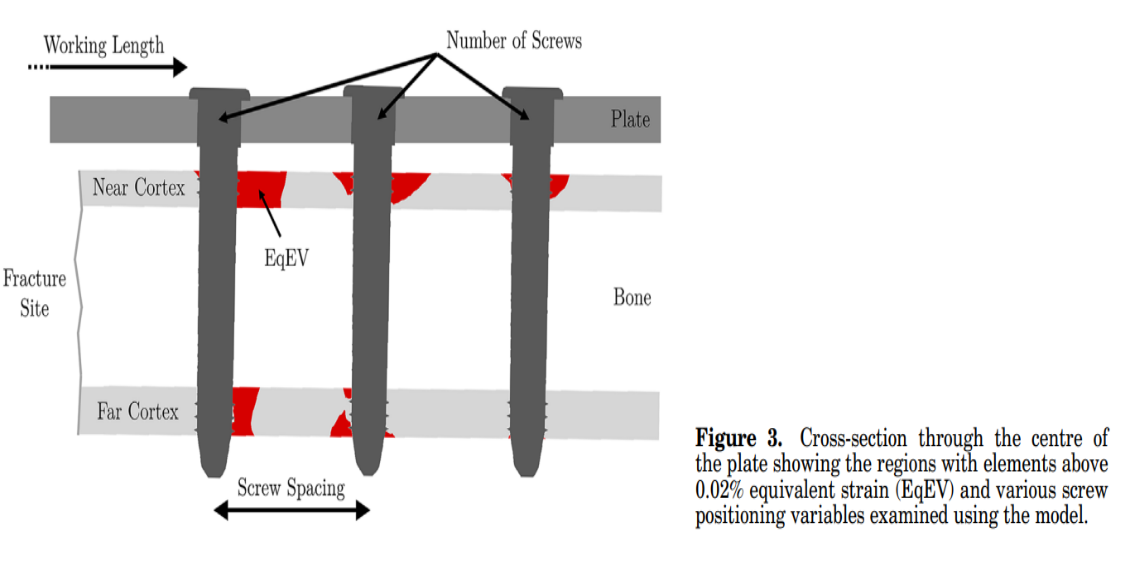Alisdair R. MacLeod, A. Hamish R. W. Simpson, Pankaj Pankaj
When using locked plating for bone fracture fixation, screw loosening is reported as one of the most frequent complications and is commonly attributed to an incorrect choice of screw configuration. Choosing a patient-optimized screw configuration is not straightforward as there are many interdependent variables that affect device performance. The aim of the study was to evaluate the influence that locking screw configuration has on loosening risk and how this is influenced by bone quality. This study uses finite element models that incorporate cortical bone heterogeneity, orthotropy, and geometrical nonlinearity to examine the effect of screw configuration on variables associated with loosening and interfragmentary motion. Strain levels within the bone were used as indicators of regions that may undergo loosening. The study found that, in healthy bone under axial loading, the most important variables influencing strain levels within the bone were the size of the bridging span (working length) and the plate rigidity. Unlike healthy bone, osteoporotic bone was found to be particularly sensitive to the spacing of the screws within the plate. Using two empty screw holes between the screws closest to the fracture was found to reduce the strain levels at the first screw by 49% in osteoporotic bone (compared to only 2.4% in healthy bone). The study also found that under torsional loading the total number of screws used was the most important variable with a 59% reduction in the strain around the screws closest to the fracture when using six rather than four screws in osteoporotic bone. © 2016 Orthopaedic Research Society. Published by Wiley Periodicals, Inc. J Orthop Res 34:1856–1864, 2016.

